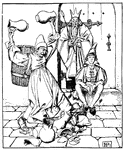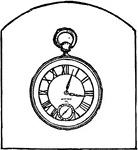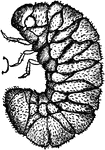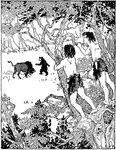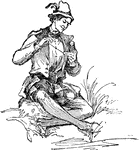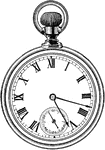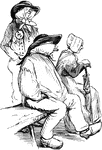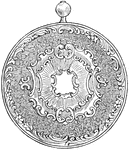
Escapement
Escapement is a mechanical device intervening between the power and the time-measurer of a clock or…

Attack at Harrisonburg
"Gallant attack by 150 of the Pennsylvania Bucktails, led by Colonel Kane, upon a portion of General…

Camp Dennison
"Camp Dennison, sixteen miles above Cincinnati, on the banks of the Miami River, General Cox commanding-…

Cuban Mastiff
A dog breed native to Spain. "The present beed is a strong and courageous race, of moderate intelligence:…
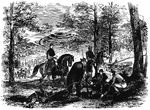
Battle of Corrick's Ford
"Battle of Carrick's Ford, Western Virginia- discovery of the body of General Garnett, by Major Gordon…
Gunboat engagement
"Engagement between the United States gunboats, commanded by Commodore Davis, and the Confederate Mosquito…
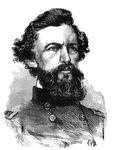
General Robert Patterson
"General Patterson, born in Cappagh, County Tyrone, Ireland, January 12th, 1792, died in Philadelphia,…

Torn Rock
"Torn Rock. This view is from the verge of the dam above the Ramapo works, near the rail-way, looking…
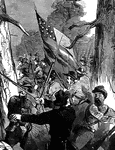
Attack at Harrisonburg
"Gallant attack by 150 of the Pennsylvania Bucktails, led by Colonel Kane, upon a portion of General…
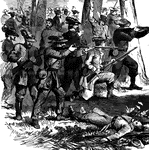
Attack at Harrisonburg
"Gallant attack by 150 of the Pennsylvania Bucktails, led by Colonel Kane, upon a portion of General…

Attack at Harrisonburg
"Gallant attack by 150 of the Pennsylvania Bucktails, led by Colonel Kane, upon a portion of General…

Deathwatch Beetles
"Other species, which also bore into timber in their larva state, are well known by the name of Death-watch…
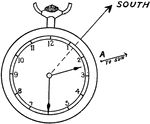
True meridian
"The position of the true meridian may be found as follows: Point the hour hand of a watch towards the…
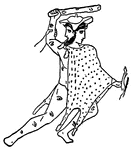
Argus
"Now Argus had a hundred eyes in his head, and never went to sleep with more than two at a time, so…
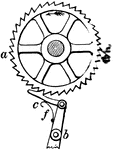
Ratchet Wheel
A wheel with pointed and anglar teeth, against which a ratchet abuts, used either for converting a reciprocating…

King Henry and His Barons
King Henry was a builder of beautiful churches. Westminster Abbey, as it is now, was one. And he was…
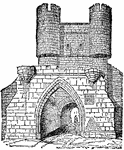
Barbican
A projecting watch tower, or other advanced work, before the gate of a castle or fortified town. The…
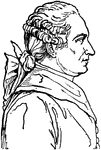
Pierre Beaumarchais
(1732-1799) Pierre-Augustin Caron de Beaumarchais was a watch-maker, inventor, musician, politician,…

Barrel and Fusee
"This is done in the mechanism of the watch, of which a, is the barrel containing the power in the form…
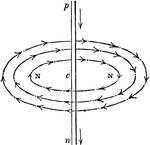
Circular Motion of the [Electric] Fluid
"Thus, if we suppose the conducting wire be placed in a vertical situation, as shown, and p, n, the…

Reflection of Sound Using a Reflector
"Hold a lamp reflector or other large concave mirror directly facing the sun, so as to bring the rays…

Sound Refraction
"Fill with carbon dioxide a large rubber toy balloon or other double-convex lens having easily flexible…

The Fusee
"A key is used to turn the cone, B. By doing so it wraps the chain around the cone and tightly coils…
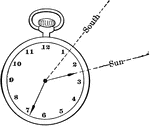
Watch Compass
"If a compass is not available, a watch can be used. Hold the watch flat in the hand and with the hour…

Watch Making
Watch making is a beautiful and complicated as the watch it's self. It was a process that required several…

Pupa of the Red Ant (Myrmica Rubra)
"When the pupa is born, the workers watch over the newly-born insect; for some days they feed it, help…
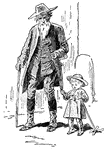
Man and Child Walking
An older adult male and a young girl walking together. The young girl is holding tight to the older…
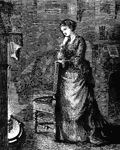
Woman Watching Fire Place
An illustration of a woman resting upon the back of a chair gazing into a fire.
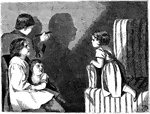
Shadow Drawing
An illustration of a young boy tracing his shadow on a wall while three young girls watch.
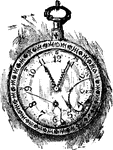
Martha Washington's Bridal Watch
Watch belonging to Martha Custis Washington (June 2, 1731 – May 22, 1802), the wife of George…

Recoiling Escapement
A piece in clocks and watches that converts rotational motion into oscillation, as in a pendulum.

Deadbeat Escapement
A piece in clocks and watches that converts rotational motion into oscillation, as in a pendulum.

Antique Bottle
This Antique bottle is a small watch shaped perfume bottle. Made out of blue and white glass, it has…

Types of Files
"Files. a, cotter-file when large, and verge- or pivot-file when small; b, square file (parallel or…
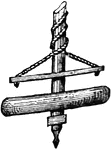
Fly Drill
"A drill to which a steady momentum is imparted by means of a fly-wheel having a reciprocating motion…
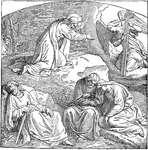
Christ in the Garden of Gethsemane
"And they came to a place which was named Gethsemane: and he saith to his disciples, Sit ye here, while…
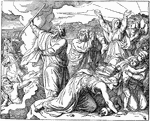
Pharaoh's Host Destroyed
"And Moses stretched out his hand over the sea; and Jehovah caused the sea to go back by a strong east…
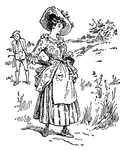
Man Watching Woman Walk
An illustration of a young man watching a lovely young woman walking along a path.
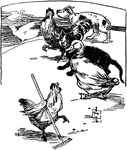
Hen Raking Barnyard with Animals Watching
An illustration of a hen raking the barnyard while a goose, cat, two dogs, and a hen watch.
